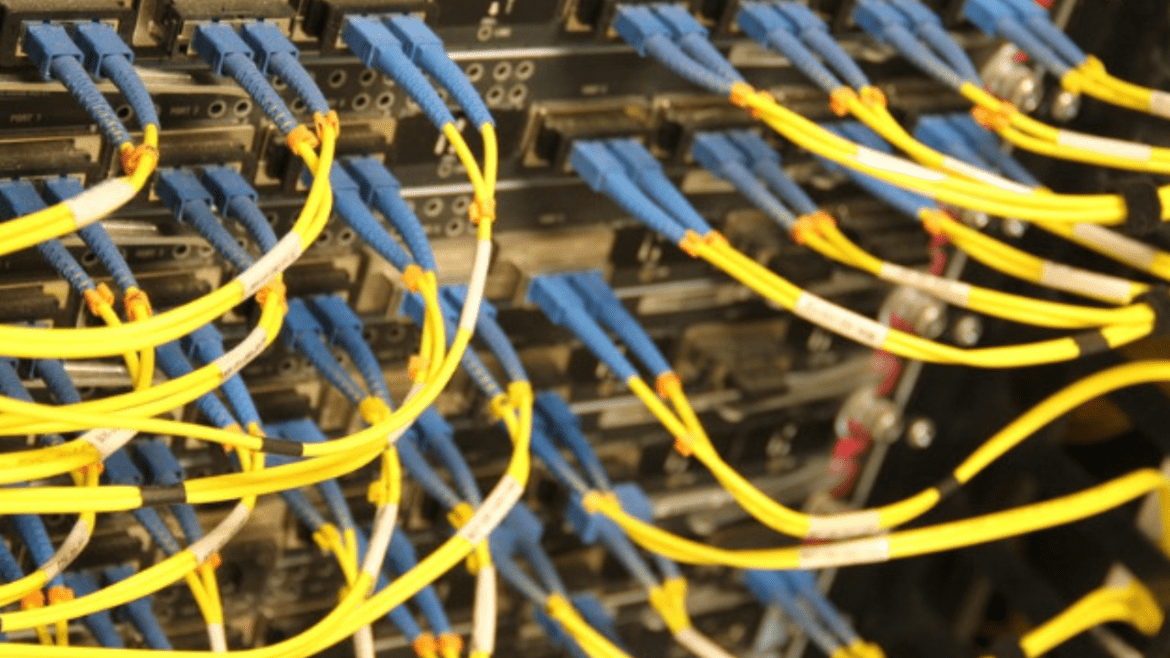Fiber optic cables are thin, flexible glass or plastic fibers that use light signals to transport data. They offer high bandwidth, low signal loss over long distances, and immunity to electromagnetic interference. Fiber optics are crucial for high-speed internet, telecommunications, and networking, providing fast and reliable data transmission.
There are three types of fiber optic cables available at Bonelinks and among fiber optic supply, indoor fiber cables have an exceptional position. BoneLinks offers a variety of indoor fiber optic cables known for their durability and performance. These cables are designed to deliver high-speed, reliable connectivity for a range of indoor applications.
Key Features of Indoor Fiber Cables
Indoor fiber optic cables play a crucial role in modern networking and offer a range of key features that make them essential for high-speed data transmission. Here are some of the key features of indoor fiber cables:
High Bandwidth
One of the primary advantages of indoor fiber cables is their high bandwidth capabilities. Fiber optic cables can carry significantly more data compared to traditional copper cables, which are perfect for fast internet and data-intensive applications. This increased bandwidth enables faster data transfer speeds.
Low Signal Loss
Fiber optic cables have low attenuation, meaning that they can transmit signals over long distances without significant loss of signal strength. This characteristic is crucial for maintaining signal integrity and ensuring reliable data transmission over extended distances. As a result, fiber cables are well-suited for long-distance networking applications where signal loss can be a significant concern.
EMI
Unlike copper cables, fiber optic cables are not affected by electromagnetic interference. This immunity to EMI makes fiber cables ideal for use in environments where electromagnetic radiation is present, such as near electrical equipment or in areas with high levels of electromagnetic interference.
Durability
Indoor fiber cables are designed to be durable and resistant to environmental factors such as moisture, temperature changes, and physical stress. This durability ensures that the cables can withstand the rigors of indoor installation and remain reliable over time. Additionally, the robust construction of fiber cables helps to prevent damage and breakage.
Flexibility
Fiber optic cables are flexible and easy to install, allowing them to be routed through tight spaces and around corners without the need for excessive bending radius. This flexibility makes fiber cables ideal for use in buildings where space is limited or where cables need to be installed in existing structures.
Security
Fiber optic cables offer a high level of security due to their design. Unlike copper cables, which can be easily tapped into, fiber cables are difficult to intercept without detection. This makes them ideal for use in secure networking environments where data privacy and security are paramount.
Compatibility
Fiber optic cables are highly compatible with a wide range of networking equipment, including routers, switches, and servers. This compatibility makes them easy to integrate into existing networks, allowing for seamless connectivity and interoperability. Additionally, fiber cables can support a variety of networking protocols.
Cost-Effective
While the initial cost of fiber optic cables may be higher than that of copper cables, they offer long-term cost savings due to their durability and low maintenance requirements. Fiber cables are resistant to environmental factors such as moisture and temperature changes. The high bandwidth capabilities can reduce the need for costly network upgrades in the future.
Applications of Indoor Fiber Cables
Indoor fiber optic cables are integral to a wide array of applications. Some of them are:
- In telecommunications, these cables enable high-speed data transmission in telephone networks, supporting clear and reliable communication.
- They are essential in data centers, connecting servers and networking equipment to facilitate efficient data transfer, crucial for the smooth operation of digital services and platforms.
- For LANs, indoor fiber cables provide fast and dependable connectivity for computer networks, ensuring seamless data exchange within organizations.
- In security systems, they play a vital role in transmitting video signals for surveillance cameras, enhancing safety and monitoring capabilities in various environments.
- In-home networks, and indoor fiber cables connect devices for high-speed internet and media streaming, enabling seamless entertainment and communication experiences for users.
- In the field of medical imaging, these cables transmit digital images in medical equipment, supporting diagnostic and treatment processes.
- Moreover, in broadcasting, indoor fiber cables are crucial for transmitting audio and video signals in broadcasting studios that ensure high-quality content delivery to viewers.
Summary
BoneLinks’ indoor fiber cables boast key features such as high durability, flexibility, and low signal attenuation. With a variety of options including single-mode and multi-mode variants, they cater to diverse indoor networking needs. Combining quality materials with advanced engineering, BoneLinks delivers reliable and high-performance indoor fiber cable solutions.
